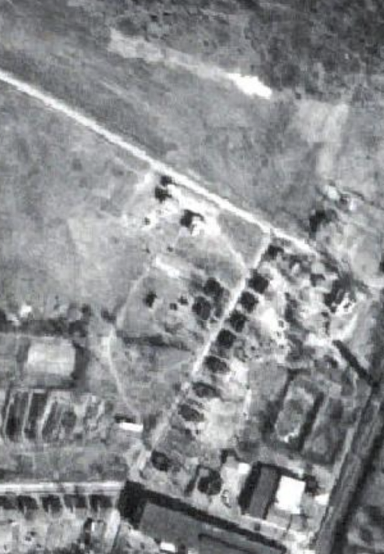Sacred Spaces at DCP
I grew up in the suburbs of Charlotte during the 90s heyday of new development, a heyday that perhaps has yet to pause. Newness was an integral concept in my childhood. Everything in South Charlotte was new. Our shopping centers were new (The Arboretum). Our highways were new (I-485). Our neighborhoods were new; “Providence Plantation” was less a description of a divinely ordained property of enslavement and more a booming advertisement for 4 beds, 3-and-a-half baths, and an open kitchen. I learned that to walk in the halls of a 1960s ranch house was to experience history. Beef ‘N Bottle? Prehistoric.
The accumulation of the new was what mattered most. When The Olive Garden and Red Lobster opened at Carolina Place in the early 90s, the community had a paroxysm of pleasure. Waits were an hour long on Tuesdays.
When descending into Charlotte Douglass, I flattered myself with a feeling of relief. See, we haven’t torn down all the trees! Charlotte largely remained a land of unconquered green, even if it felt like ALL SPRAWL on the ground, one Lowes giving the finger to one Home Depot across the pavement.
In my own self-actualization, I really struggled with history as a breathing thing. History was an event that naturally had happened, and it was now gone and abstract, covered over by the new, and this was fine with me! I lacked interest in my family’s history, and I lacked interest in my city’s history. Charlotte seemed quite giddy and unburdened by the fact that it didn’t have any, and I was seduced by this.
At a recent Enneagram workshop sponsored by the Arts and Science Council, the wise facilitator described Charlotte as a type-3 city, obsessed with the doing, the achieving, the praise. Not so interested in the interior life of the past.
But, as we all know, the land teems with memory. And while the prevailing image of forest comforts the conservationist flying into town, we also know that eventually we run out of green. What is new will no longer be built on old nature but old humanity.
This spring, we are presenting two plays back-to-back that tell stories about the layering of new on top of old. A horizontal story would be about the loss of trees. These, however, are vertical stories about the loss, the erasure, of what’s underneath.
The Minutes, a masterpiece by America’s playwright laureate Tracy Letts, is—surprisingly if you’ve read this blog til now—friggin’ hilarious. Why? It’s about incompetent government. Something that can bring us all together! And then, eventually, it’s not so hilarious. A Parks and Rec episode takes a turn for the sinister, and the land beneath the play’s fictional town hall begins to whisper.
A Small and Humble Erasure is a world premiere by local playwright Stephanie Gardner, and it cured me of many of my entrenched assumptions about Charlotte described above. Did you know that, decades and decades ago, a Queen City community theatre was founded on an enslaved persons’ burial ground? This does not sound as funny as The Minutes, but this thrilling chronicle is, thanks to Stef, profoundly funny, humane, and theatrical. If you saw Three Bone’s stellar The Chinese Lady starring Amy Wada, you’ll know that history lessons need not be medicinal, and that is true here. Oh, and Amy Wada stars as herself in our play, too.
Both plays are presented at Armour Street Theatre, an old Mill Village church with history we at DCP must better investigate ourselves. The theatre has always been my sacred space, but what do we do when sacredness layers upon sacredness? Are they the inhale and exhale in harmony, or are they a pillow pressing down on a memory gasping for air?

